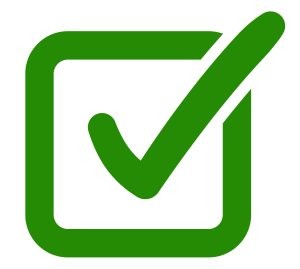Neurodiversity information for parents and young people
Making sure your baby sleeps safely will significantly reduce the risk of Sudden Infant Death Syndrome (SIDS) also called ‘cot death’.
Cot death is rare nowadays, partly because people follow safer sleeping advice to keep their baby safe.
This safe sleeping advice is important every time your baby sleeps, day and night.
Always put your baby to sleep on their back
Evidence from international studies shows that you can reduce the risk of cot death if you put your baby to sleep on their back.
Follow this advice whenever you put your baby to sleep, day or night. It will help reduce the risk of cot death.
Once your baby is old enough to roll from their back to their front and back again, they can find their own sleeping position. You do not need to place your baby on their back to sleep once they have learned how to roll.
How to put your baby down for a sleep
Put your baby to sleep in a cot or Moses basket. At night, put the cot or Moses basket in the same room as you for the first 6 months of your baby’s life.
![]()
- If you feel tired, avoid falling asleep yourself before your baby is safely in their bed. Do put your baby down safely in their cot or Moses basket before you lie down.
- Do place your baby on their back with their feet touching the end of their cot, Moses basket or pram.
- Do use a mattress that is in good condition. See the ‘What kind of mattress does my baby need?’ section below.
- Do make sure the temperature of the room is not too hot or too cold. The ideal temperature is 16 to 20 degrees C. For more information on the right sleep temperature for your baby, see the ‘How do I make sure my baby doesn’t overheat when sleeping’ section below.
- Do keep your baby’s cot or Moses basket clear of soft toys, loose bedding and baby positioning items. This prevents their head accidentally becoming covered.
![]()
- Do not sleep with your baby on a sofa or in an armchair.
- Do not let your baby sleep in the same bed as you (however tempting).
- Do not cover your baby with a blanket higher than their shoulders. They are at risk of cot death if their head accidentally becomes covered.
- Do not put any of these items in your baby’s cot or Moses basket: duvets, pillows and blankets, cot bumpers, soft toys, baby positioning products like wedges, straps, baby nests or pods to help them sleep in one position.
If you choose to share a bed with your baby
Evidence shows that it is safer not to share a bed with your baby. If you want to bed share or co-sleep with your baby, follow these safety rules.
 |
Make sure your baby is sleeping on their back at all times. |
 |
Ensure the temperature of the room is not too hot or too cold. The ideal temperature is 16 to 20 degrees C. |
 |
Keep pillows, sheets, blankets and any other loose bedding away from your baby. This will avoid the risk of your baby overheating or suffocating. |
 |
Make sure your baby won’t fall out of bed or get trapped between the mattress and the wall. |
 |
Avoid having other children or pets in the same bed as you and your baby. |
Never share the bed if:
 |
You or your partner smokes cigarettes or e-cigarettes (vaping). This applies even if you do not smoke in the bedroom or house. Smoking harms your baby’s health. |
 |
You or your partner have drunk alcohol or taken drugs. This includes any medications that may make you sleepy. |
 |
You are extremely tired and will be less aware of your baby’s safety. |
 |
Your baby was born prematurely (37 weeks or less). |
 |
our baby was born at a low weight (2.5kg or 5½ lbs or less). |
If you are a smoker
It is important to keep your baby in a smoke-free environment.
Smoking cigarettes during pregnancy or after birth can significantly increase the chance of cot death for your baby. Your baby can be affected directly by your smoking or by being exposed to second-hand smoke.
There is no current research on e-cigarettes (vaping) and cot death. Using an e-cigarette seems to be much safer than continuing to smoke traditional cigarettes, both while you are pregnant and once your baby is born.
We strongly recommend:
 Quit smoking. The safest option is to give up smoking completely. For advice speak to your GP or see the ‘More information’ section below. |
 Do not share a bed with your baby if you use traditional or e-cigarettes (even if you do not smoke in the bedroom or house). |
The type of mattress your baby needs
- Use a firm and flat mattress protected by a waterproof cover. This will help keep the mattress clean and dry.
- Before making up your baby’s bed every time, make sure the waterproof cover is clean and dry.
- Make sure your baby’s mattress is clean, not stained and not fraying round the edges. Make sure it fits the Moses basket or cot properly, without any gaps around the sides.
- Where possible, use a new mattress for each baby. If this is not possible, use a second-hand mattress in good condition.
- For advice on choosing a mattress for your baby see the ‘More information’ section below.
How breast-feeding helps
Breast-feeding even for a short time can give extra protection to your baby. Breast-feeding is linked to a lower cot death rate. This is the case even if you also give your baby formula.
Breast-feed if you can. Ask your midwife or health visitor for help if you need it. For advice from the National Breastfeeding Helpline see ‘More information’ section below.
Making sure your baby doesn’t overheat when sleeping
- Make sure the temperature of the room is not too hot or too cold. The ideal temperature is 16 to 20 degrees C. Use light bedding or a lightweight sleeping bag. This is comfortable and safe for sleeping babies.
- Use a room thermometer to help you monitor the temperature of the room.
- You can check your baby is not too hot by feeling their chest or the back of their neck. If their skin is hot or sweaty remove one or more layers of bedclothes or bedding.
- For Lullaby Trust advice on sleeping temperature see the ‘More information’ section below.
How to swaddle your baby
If you decide to swaddle your baby, follow this advice to keep them safe.
 |
Do use thin material, such as cotton. |
 |
Do check your baby’s temperature regularly, to ensure they do not get too hot. |
 |
Do not swaddle your baby above their shoulders. |
 |
Do not put a swaddled baby to sleep on their front. |
 |
Do not swaddle your baby too tightly. |
The best way to use slings and baby-carriers
Slings and baby-carriers can be a useful way to hold your baby and keep your hands free. The safest way to use a baby carrier is to make sure your baby is secure in an upright position. Until they are able to support their own head, keep them facing you so you can always see their face.
When wearing a sling or baby carrier, remember the TICKS guidelines suggested by The Lullaby Trust:
- Tight
- In view at all times
- Close enough to kiss
- Keep chin off the chest
- Supported back.
More information
Lullaby Trust information on safer sleeping for babies
Lullaby Trust YouTube video on safer sleeping for babies
Lullaby Trust information on correct sleeping temperature for babies
Lullaby Trust Easy Read information on safe sleeping for babies
The Royal Society for the Prevention of Accidents information on baby slings
The Royal Society for the Prevention of Accidents information on choosing a mattress for your baby
Contact information
Paediatric Admin Team, Monday to Friday, 9 am to 5 pm